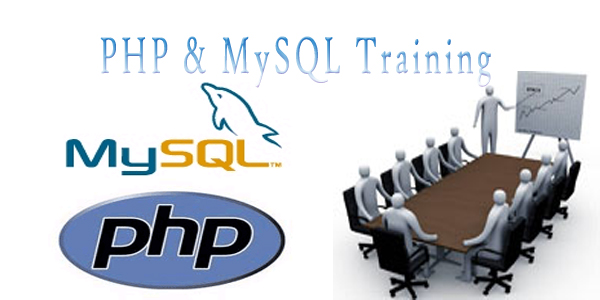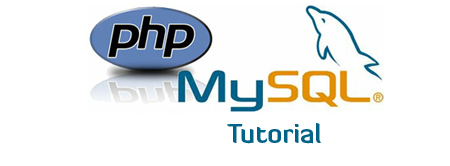PHP MySQL Tutorial for Beginners
Jun 04, 2012, by admin
 PHP is the most popular scripting language for web development. It is free, open source and server-side (the code is performed on the server). MySQL is a Relational Database Management System (RDBMS) that uses Structured Query Language (SQL). It is also free and open source. The combination of PHP and MySQL gives unmet options to create just about any kind of website – from small contact form to large corporate portal.
PHP is the most popular scripting language for web development. It is free, open source and server-side (the code is performed on the server). MySQL is a Relational Database Management System (RDBMS) that uses Structured Query Language (SQL). It is also free and open source. The combination of PHP and MySQL gives unmet options to create just about any kind of website – from small contact form to large corporate portal.
What is PHP
PHP is a scripting language that is often embedded into HTML to add functions HTML alone can’t do. PHP allows you to collect, process and use data to create a desired output. In short, it let’s you interact with your pages.
PHP is able to preform a number of tasks including printing data, making numeric calculations (such as addition or multiplication), making comparisons (which is bigger, are they equal, etc) and making simple boolean choices. From this you can create more complex loops and functions to make your page generate more specialized data.
PHP was at first created as a simple scripting platform called “Personal Home Page”. Nowadays PHP (the short for Hypertext Preprocessor) is an alternative of the Microsoft’s Active Server Pages (ASP) technology.
PHP is an open source server-side language which is used for creating dynamic web pages. It can be embedded into HTML. PHP is usually used in combination with a MySQL database on Linux/UNIX web servers. It is probably the most popular scripting language.
PHP is a widely-used general-purpose scripting language and interpreter that is freely available. A full explanation of all the PHP tags, complete user manual and lots of tutorials can be found on the PHP’s official page.
What is MySQL
MySQL is a relational database system that is used to store information. MySQL can store many types of data from something as tiny as a single character to as large as complete files or graphics. Although it can be accessed by most programming languages, it is often coupled with PHP because they work together with ease.
Information stored in a MySQL database hosted on a web server can be accessed from anywhere in the world with a computer. This makes it a good way to store information that needs the ability to change over time, but also needs to be accessed over the net. Some examples that can utilize MySQL are a web message board or a customer’s shipping status.
MySQL is a freely available open source Relational Database Management System (RDBMS) that uses Structured Query Language (SQL).
SQL is the most popular language for adding, accessing and managing content in a database. It is most noted for its quick processing, proven dependability, ease and flexibility of use. MySQL is an necessary part of almost every open source PHP application. Good examples for PHP/MySQL-based scripts are phpBB, osCommerce and Joomla.
What is php Mysql used for
 PHP and MySQL unite to be an easy yet powerful way to create dynamic web pages that actually interact with your visitors. HTML can create useful and well formatted web pages. With the addition of PHP and MySQL you can collect data from your users, create specific content on the fly, and do many other things that HTML alone can’t do.
PHP and MySQL unite to be an easy yet powerful way to create dynamic web pages that actually interact with your visitors. HTML can create useful and well formatted web pages. With the addition of PHP and MySQL you can collect data from your users, create specific content on the fly, and do many other things that HTML alone can’t do.
The beauty of PHP as a language is that it is designed to be used along with HTML. You can use PHP right inside your already existing HTML content, or put HTML tags right inside your PHP coding. When learning PHP you are not making your existing HTML knowledge obsolete, you are instead adding to it to give it more functions and aptitudes.
How Php and Mysql work together
PHP and MySQL accompaniment each other to do with neither can do alone. PHP can collect data, and MySQL can in turn store the information. PHP can create dynamic calculations, and MySQL can offer it with the variables it uses. PHP can create a shopping cart for your web store, but MySQL can then keep the data in a format PHP can use to create receipts on demand, show current order status, or even suggest other related products.
Although PHP and MySQL can each be used separately, when you put them together it opens up countless potential for your site. As the internet progresses, it becomes more and more essential to deliver dynamic content to keep up with the insists of web surfers and their desire to have information instantly delivered to them online. By learning to use PHP and MySQL you can deliver this information to them on demand.
Running PHP and MySQL
In order to do some of our tutorials (or program with PHP and MySQL in general) you need to be able to run PHP and MySQL. Although most free hosts do not have PHP and MySQL support there are some that do, and there are also many low cost hosting options available. If you already have hosting and are unsure if you have PHP and MySQL support you should contact your host directly. If you are shopping for hosting be sure that they support PHP and that your package includes at least one MySQL database.
Another option is to install PHP and MySQL directly onto your Windows computer. If you are a Mac user you already have the capability and just need to activate PHP and MySQL.

